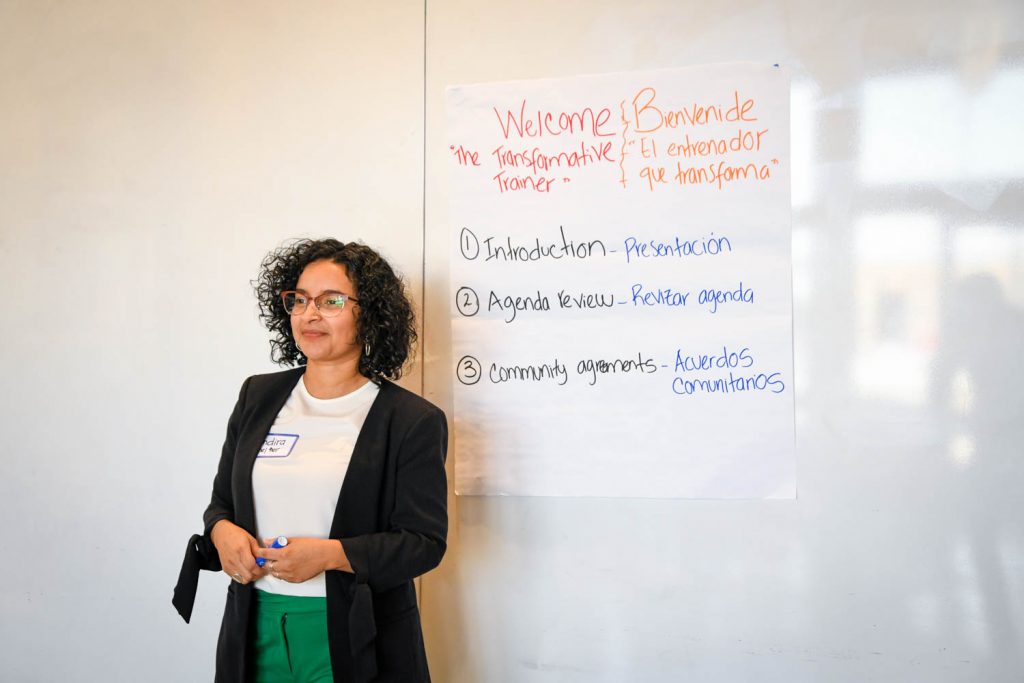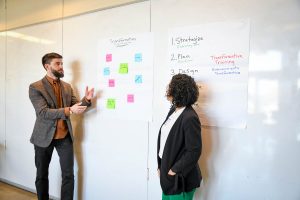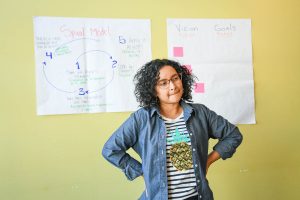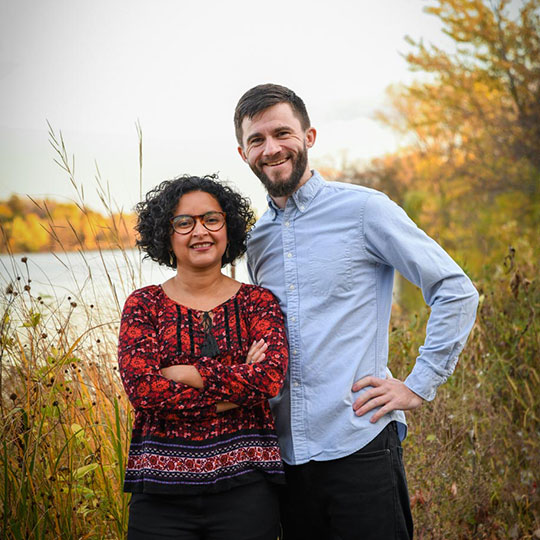The success of your learning event begins in the stage of design when you ask yourself what you want to achieve (the goal), who will do it (the learner), and how you will achieve it.
Let’s reflect on the “how.”
Check out our new worksheet to help you craft “action priorities” for your next training.
Why the way you write your objectives matters
When your objective is written with action in mind, it doesn’t just guide your workshop design, it also sets the stage for what participants will be able to do after. A clear, action-based objective:
- Guides facilitation and workshop methods
- Makes it possible to evaluate impact
- Motivates participants to take action
A good objective doesn’t just say what you want to achieve, it helps you know when you’ve achieved it.
Key Questions for Writing Action-Based Objectives
Here are some questions you might consider to inform your learning objectives.
- What must participants do to achieve the goal?
- How will I know they did it?
- How will it be observed, heard, or shown?
- How can this action be practiced during the workshop?
Action Verb Examples
When writing your objective, use a verb that describes what participants will do in order to practice the skill. Here are some action verbs associated with different types of learning.
- Cognitive (knowing): analyze, compare, define, describe, explain, identify
- Affective (feeling): share, express, participate, advocate, reflect
- Psychomotor (doing): build, draw, write, create, demonstrate.
Comparison between passive verbs and active verbs
In recent months, we’ve been supporting organizations that are developing “Know Your Rights” workshops using a participatory approach, centered on what participants need to do.
Here are some examples of how we have converted content into learning objectives that are clearer and actionable.
| Comparison between passive verbs and active verbs | |
| Passive Verbs | Active Verbs |
| Participants learn what their rights are | Participants fill out a family preparedness plan |
| Participants know what to do if…Participants familiarize themselves with the resourcesParticipant know their rights | Participants identify and memorize…Participants practice asking…Participants practice asserting their rights in role plays… |
| Participants understand their rights | Participants make an action plan ..participants identify a trusted person…Participants create a list of … |
| Participants understand how deportation works | Participants map the steps of a deportation process |
| Participants become aware of available resources | Participants locate and name 3 local legal aid organizations |
| Participants reflect on migration experiences | Participants share a migration story in small groups |
| Participants are introduced to ICE procedures | Participants practice how to respond to ICE procedures |
| Participants feel empowered to… | Participants take action to defend .. |
At Learning to Transform, we believe a powerful workshop starts with goals that can be lived, practiced, and turned into real action. Use this framework and let us know how it goes!





